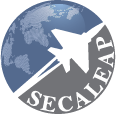Aircraft coffee maker
Many people enjoy having that special coffee even when they are traveling by plane.So we can not miss the opportunity to have it during a flight, right? Commercial line aircrafts have coffee makers that were designed exclusively for them.
The equipment is operated by the flight attendants, it has instruction manual, on/off buttons as well as a beverage heating maintenance button that shows the operator the lack of water in the coffeemaker, that means, if the coffee maker has no water enough to work, the on/off button gets inactive preventing the heater from overheating, deterioration of the coffee maker and possible fire.
There are some differences between the regular coffee maker and the one on an airplane. Among them, we can highlight the ones on airplane coffeemaker:
- It has approval certificate;
- It has security sensors;
- It goes through frequent maintenance.
And you might be asking yourself: but why does a coffee maker undergo maintenance? The answer is simple! Because the coffeemaker needs to be operated safely by flight attendants. Every coffee maker should last about 5 years. In this way, maintenance can be done locally or by overhaul.
The first type of maintenance, the localized one, occurs when the equipment presents failures in some sensor. The damage is repaired by a maintenance professional, and the coffeemaker returns to its normal use. The second type, also known as overhaul. It usually happens every 3 years, due to the time the equipment has been used.
During maintenance, the coffeemaker is connected to panels to check the water level and temperature, heating time, electric current, voltage, internal water pressure, operation of all sensors, etc. At the end, the maintenance professional attaches a seal to the coffeemaker that must be signed by an engineer.
The operation of the aircraft coffee maker is simple and looks like a capsule coffee maker. To make coffee, the water enters the equipment, heated and then exits through pipes that have sensors. The sachet containing the coffee is placed in a compartment that, after being activated, locks the pot, to prevent, in turbulence, for example, the pot with hot water from coming loose, which could cause accidents and burns in flight attendants. After that, the flight attendant unlocks the coffeemaker, gets cups of coffee and serves them to passengers!
Secaleap is the official representative of Espresso and it is specialized in Aircraft Coffee Machine maintenance.



